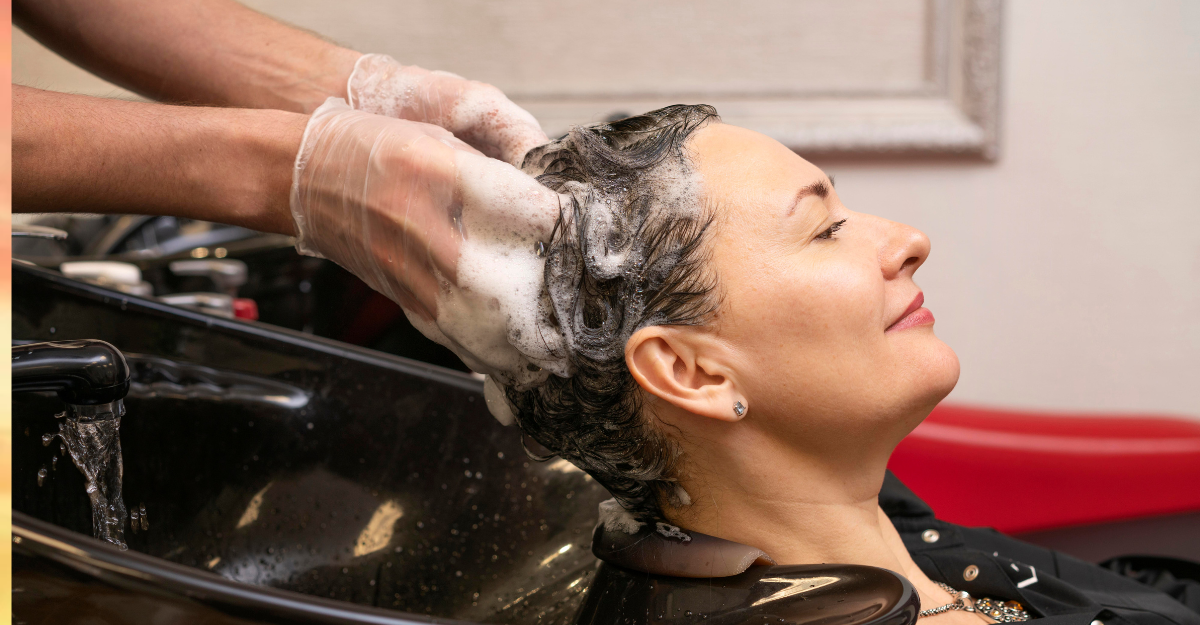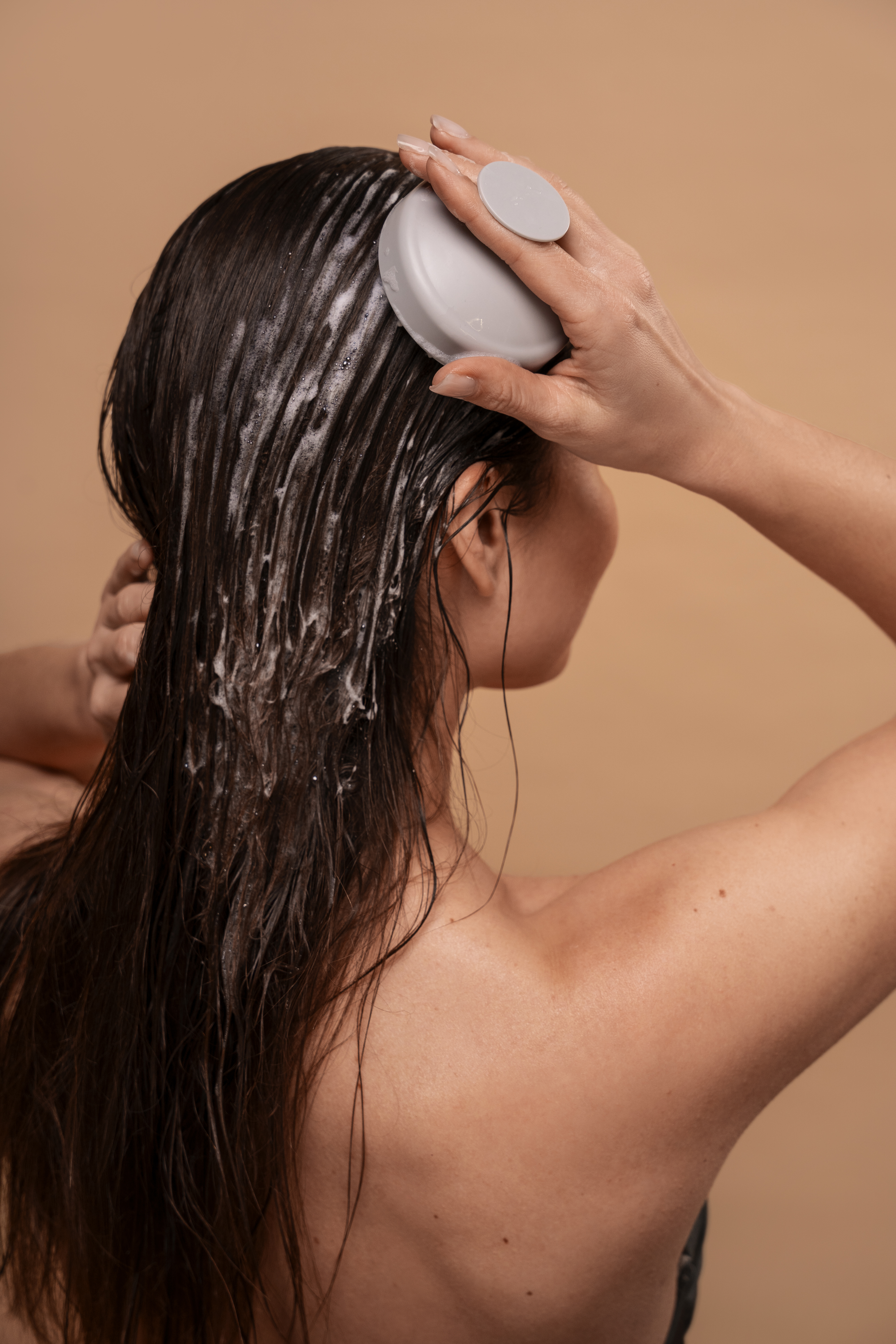
We meticulously cleanse, tone and exfoliate our complexions, yet often neglect the skin that covers our heads. If you're chasing truly incredible hair—we're talking volume, shine, and a dandruff-free foundation—dermatologists agree: your scalp needs to be on your exfoliation regimen. The reason is simple: your scalp is an extension of your face, and it requires the same deep cleansing to thrive.
"Just like your skin, your scalp accumulates dead skin cells, excess oil, product residue, and pollutants over time," explains Dr Ruben Bhasin Passi, Consultant, Dermatology, CK Birla Hospital, Gurugram.
Leaving this buildup behind chokes your hair follicles, hindering growth and leading to frustrating issues. Dr Passi notes that exfoliating helps "boost circulation, promotes healthier hair growth, and helps prevent dandruff, itchiness and flakiness." A purified scalp ensures that all those expensive shampoos, serums, and oils can finally penetrate and work their magic, resulting in "shinier, stronger, and more manageable hair."

Adding this step to your routine is simpler than you think. Dr DM Mahajan, Senior Consultant, Dermatology, Indraprastha Apollo Hospitals, advises approaching exfoliation with the following steps:
1. Prep: Start by detangling your hair while it's dry to avoid unnecessary breakage.
2. Application: Dampen your scalp slightly. Apply a dedicated scalp scrub or an exfoliating treatment. "This could be a physical scrub with fine particles or a chemical exfoliant featuring powerhouses like salicylic acid," advises Dr Mahajan.
3. The massage: "Using your fingertips and not your nails, gently massage the product in small circular motions for about 5 minutes to loosen debris and stimulate blood flow," says Dr Mahajan. The goal is to break down product buildup without irritating the delicate scalp barrier.
4. Rinse and refine: Rinse thoroughly with lukewarm water, the follow up with a mild shampoo and conditioner to nourish the scalp and hair, restoring essential moisture.
Don't miss: Healthy Tips To Take Care Of Your Hair Scalp
While the results are transformative, the key to a healthy scalp is moderation. Over-exfoliating is the fastest way to derail your efforts, as it can strip the scap of its natural oils, leading to irritation, dryness or even increased oil production as the skin attempts to compensate.
"Dermatologists suggest refraining from harsh physical scrubs or vigorously rubbing,” cautions Dr Mahajan. Stick to gentle formulas and always follow with hydration, either through a lightweight conditioner or a non-greasy scalp serum.
Dr Passi adds that if your scalp feels "tight, itchy, or inflamed afterward, reduce the frequency and switch to a milder product."

The dry winter air and indoor heating can leave your scalp feeling parches and sensitive. Your exfoliating strategy should shift accordingly.
Switch to soothing formulas, recommends Dr Passi. "Choose moisturising exfoliants infused with soothing ingredients like aloe vera, tea tree oil, argan oil, hyaluronic acid."
Next up: avoid using hot water, as "it can worsen dryness; use lukewarm water instead," says Dr Mahajan.
Finally, post-exfoliation, always apply a nourishing scalp oil or light-weight leave-in conditioner to lock in moisture and prevent flaking.
Don't miss: Safely Scrub Away Darkness: Exfoliation Tips For Dark Areas Of The Body
How frequently you should indulge depends entirely on your scalp type and product usage. Dr Mahajan notes that "consistency, not frequency, is the key: gentle, frequent care rather than infrequent, vigorous treatment leads to better long-term health."
For oily scalps, the ideal frequency is once a week, while for normal to dry scalps, once every two to three weeks is the perfect frequency. Meanwhile, for sensitive scalps, limit exfoliation to once every two to three weeks.
"Pay attention to your scalp's signals: if you notice flakiness, buildup or itching, it's a clear sign that a gentle exfoliation session is due," Dr Passi concludes.
Image courtesy: Freepik
For more such stories, stay tuned to HerZindagi.
Also watch this video
Herzindagi video
Our aim is to provide accurate, safe and expert verified information through our articles and social media handles. The remedies, advice and tips mentioned here are for general information only. Please consult your expert before trying any kind of health, beauty, life hacks or astrology related tips. For any feedback or complaint, contact us at compliant_gro@jagrannewmedia.com.